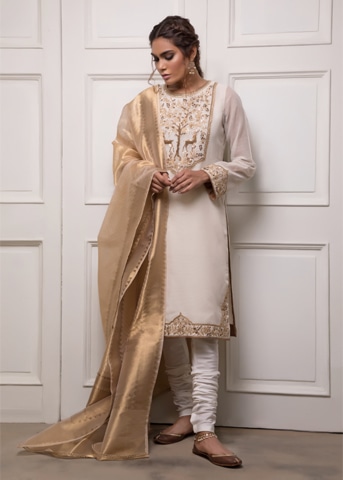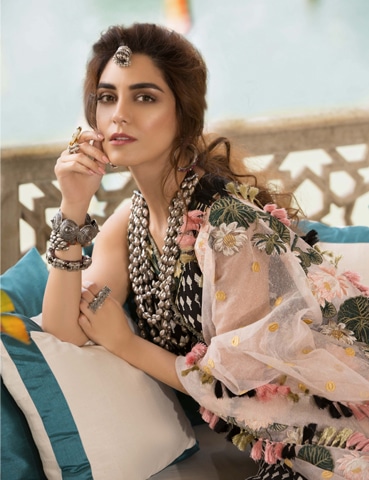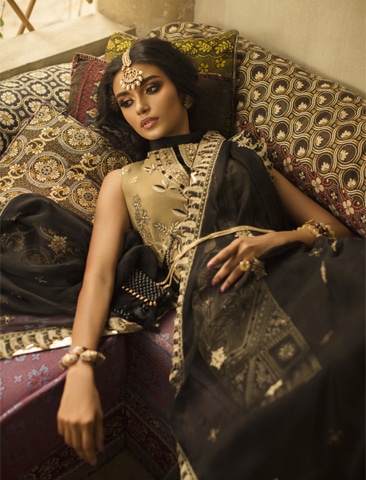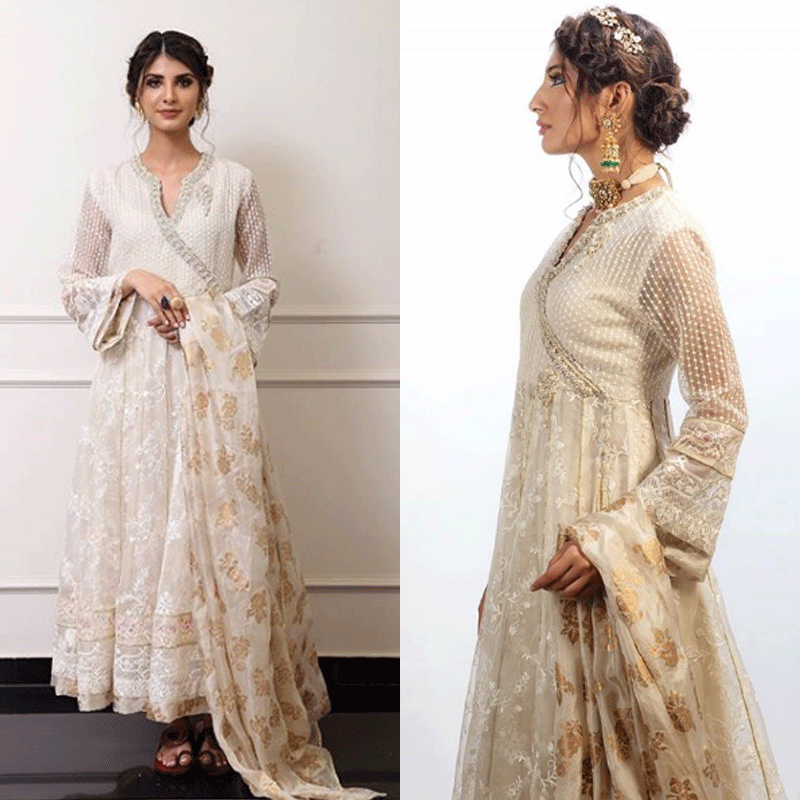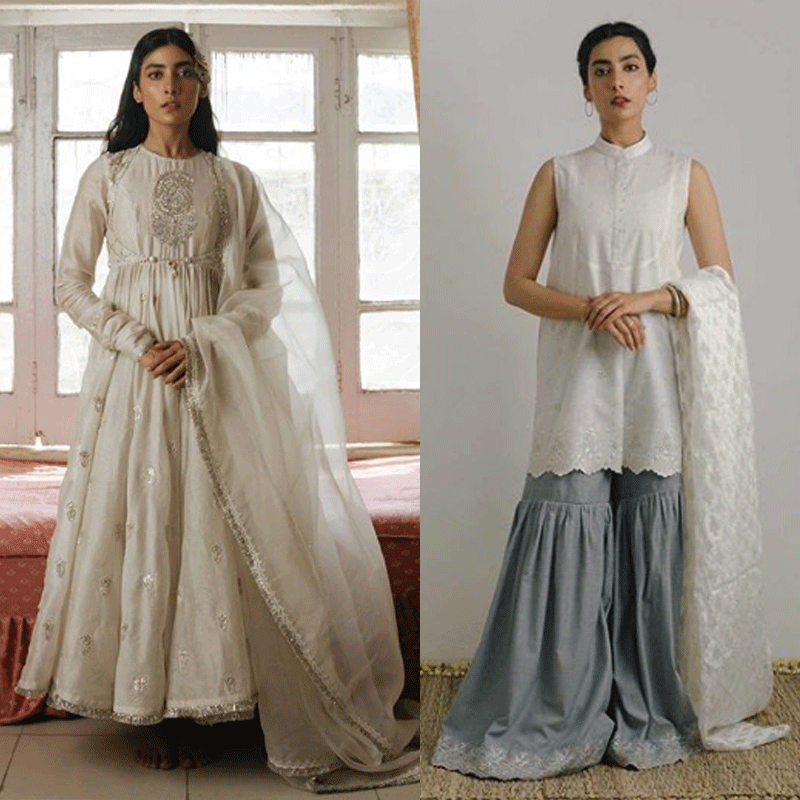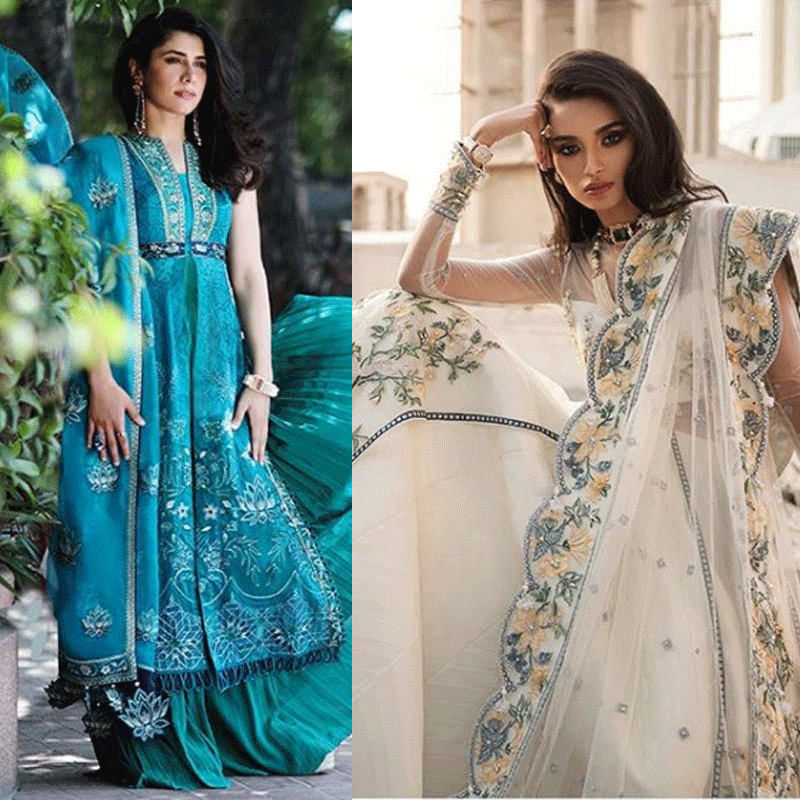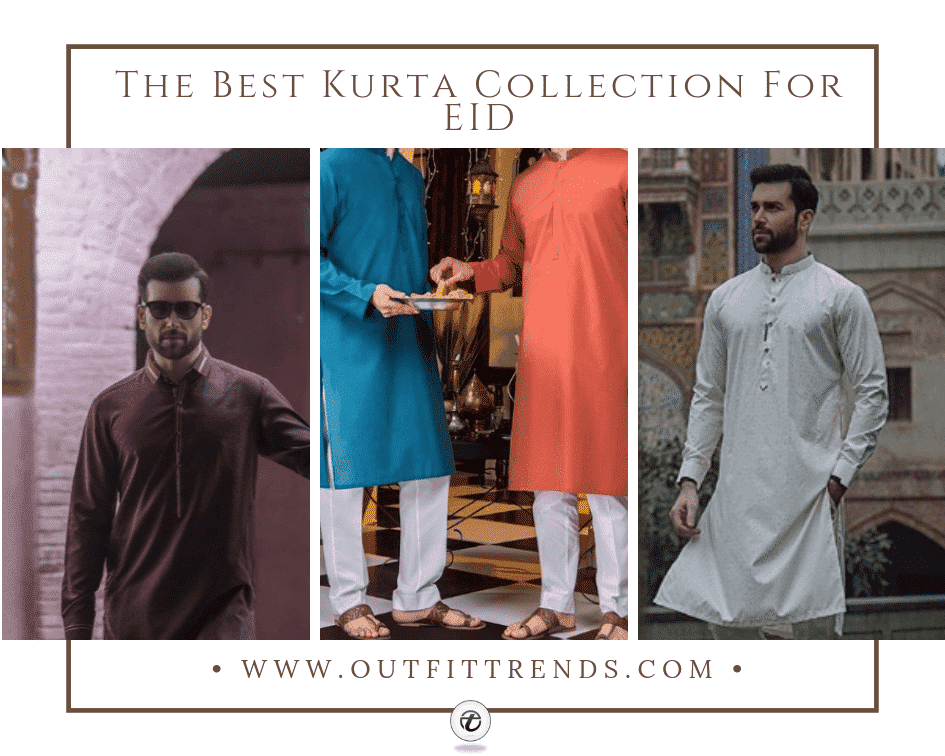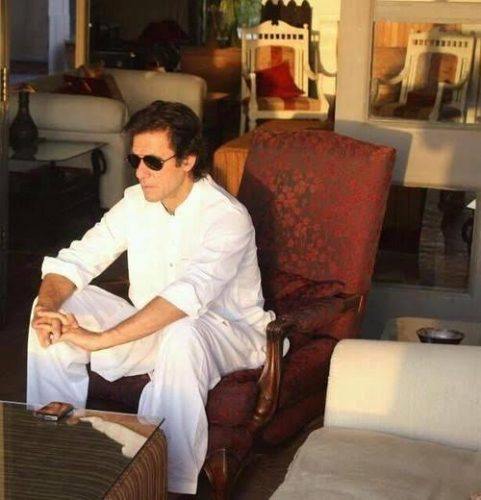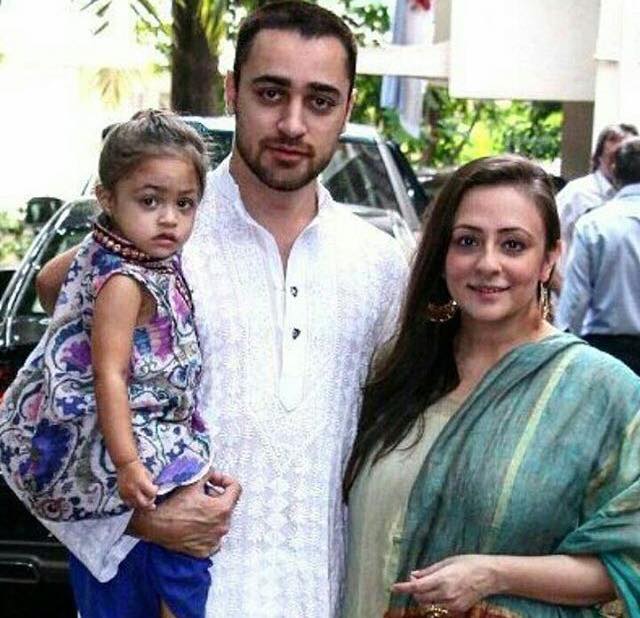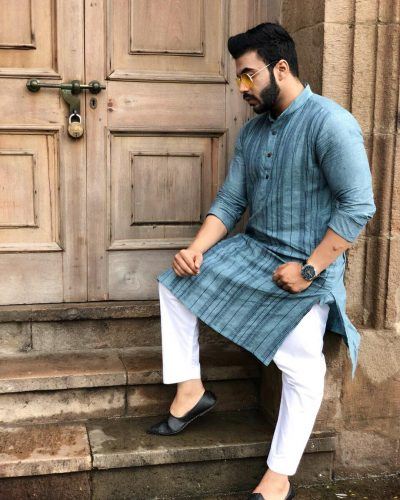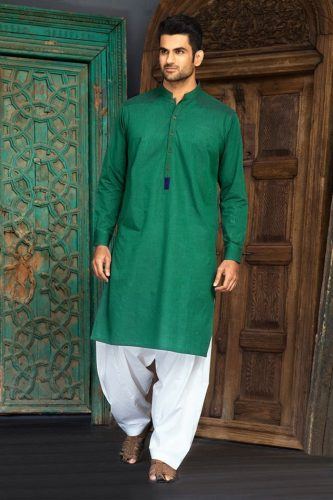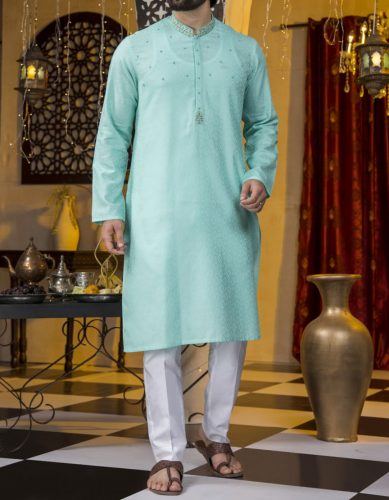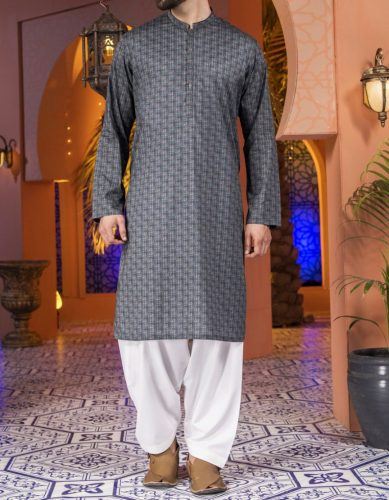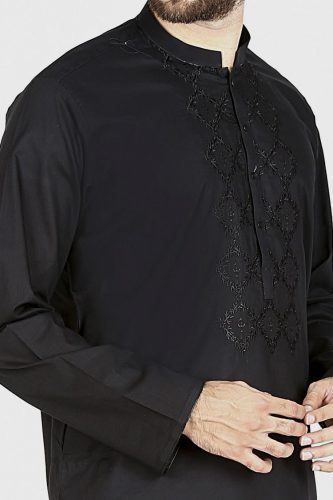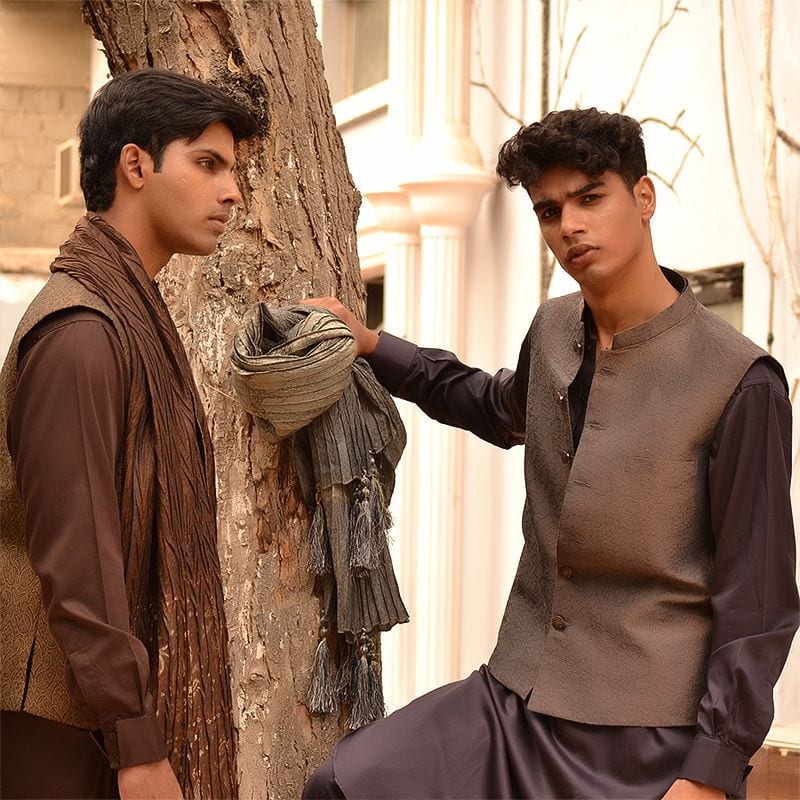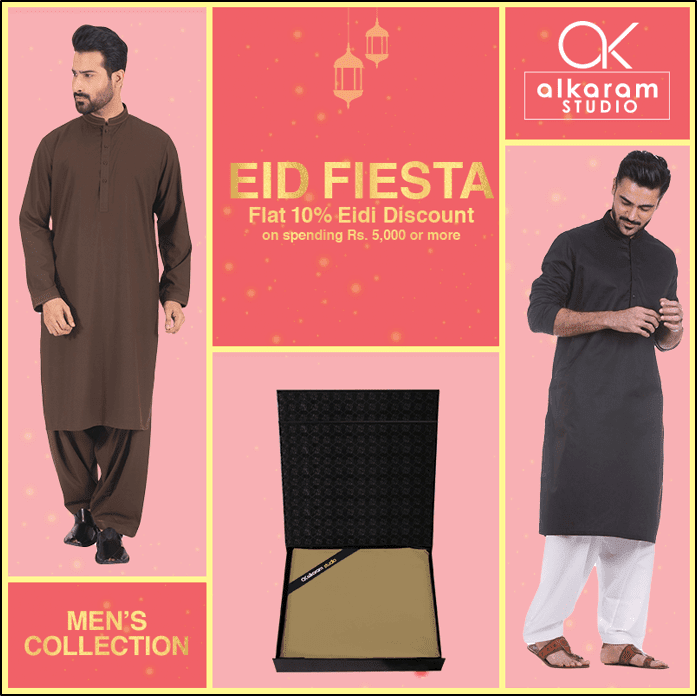ghazi52
PDF THINK TANK: ANALYST

- Joined
- Mar 21, 2007
- Messages
- 104,047
- Reaction score
- 106
- Country
- Location
TRENDING THIS EID...
Maliha Rehman
May 26, 2019

Farah Talib Aziz
‘Tis the season when people begin asking each other, ‘What’s trending this Eid?’ But perhaps a more relevant query would be: does anything ever trend on Eid? The festive season, following a month of food deprivation, food binges and the proverbial holy battle against vice, has never really been one for sartorial statements. Eidul Fitr, in fact, with its predilections towards mehndi, bangles and ethnicity has always been more of a traditional affair.
Commercially-savvy designers — and there are so many of them now — know this and Eid collections tend to be beautiful, as opposed to cutting-edge. Unfortunately, at the hands of the untalented, beautiful can also be boring. Take your pick of any Eid exhibition taking place in your city and you’re likely to encounter cottons in soft pastel shades and the colour du jour, a classic crispy white. The hues and the lightweight fabric make sense simply because Eid this year is likely to be swelteringly, unbearably hot. So far, so good.
But splayed out on this pretty canvas is usually a repetitive concoction of applique mixed with lace, running into chikan finishings with a dash of beaded borders and frills. There is also a favourite buzzword doing the rounds and it’s called ‘chikankari’. This delicate shadow-work was having a high fashion moment about a year-and-a-half ago. That moment has now been prolonged to eternity and, although it remains beautiful, chikankari is now completely ubiquitous.
Come Eid Ul Fitr and a massive last-minute hunt is launched for the perfect jorra replete with lace, beaded borders and frills. This year, Icon makes it easier for all the women out there by narrowing their choices and giving a sneak peek into what some of the most sought-after designers are offering in terms of Eid prêt
Very few instances of chikankari, such as in Image Fabrics’ version which is worked with gota, stand out. In general, though, most Eid exhibits boast the same chikankari as the Pakhtun vendors sitting in Aashiana or Liberty Market. Shockingly, sometimes both have the same fabric!
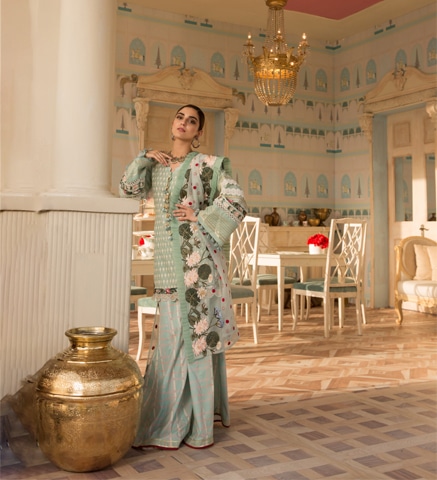
Crimson X by Saira Shakira
That’s another crib one has against Eid designer-wear. In their frenzy to create appealing, commercial design, most brands don’t try to add personal touches to their collections. A trip is simply made to a favourite market down the block, swathes of fabrics and finishings are picked up and, then, patched together. Nothing very trendy about that.
Then again, what does stand out in Eid fashion? More than anything, it’s the dupatta. Fashion week season may have just culminated but designers have curbed out-of-the-box creativity for now, going all out desi. ‘Tis the season, after all.
Fashion goes old school
Having traversed the holy route in Ramzan, the dupatta asserts itself with great gusto come Eid. This scarf is hardly ever visible on the runway or even in fashion shoots, except those dedicated to lawn. Festive-wear line-ups, though, have plenty of beautiful dupatta options.

Elan
“On Eid, people like to go back to their roots,” observes designer Rizwan Beyg. “They opt for shalwar kameez and dupattas. The only thing that may vary within a collection is the length of the shirt! Also, if there is any experimentation at all, it is in the lowers, which may range from bell bottoms to churidars, pants and, particularly popular with my clientele, different versions of the shalwar.”
Maliha Aziz of Farah Talib Aziz confirms this. “This time round we created four handworked dupattas that could be purchased as separates and they really sold well,” she says. “Also, we provided dupattas with our silk tunics and it was really noticeable that customers were more inclined towards buying those particular designs.”
Another traditional staple rearing its head in most collections is the classic cotton gharara. Designer Zara Shahjahan, with her predilection for ethnic fashion, has incorporated ghararas, choorridars and narrow shalwars in her Eid line, pairing them with kurtas and dupattas. The Eid collection at Maheen Khan’s high-street label, Gulabo, is also playing to a desi tune.

Maheen Karim
“The lightweight cotton gharara makes a lot of sense this Eid and it can be paired with a simple shirt or a more embellished one,” says Maheen Khan. “So do purely Eastern designs such as the peshwaaz and the angarkha. I haven’t used any embroideries although there are gota accents in some of the outfits. There is also a mix of textures — a cotton shirt with a kamkhwaab gharara for instance.”
In Zaheer Abbas’ Eid collection, the main focus has been on handwork, with marorri, kaamdani and gota embellished on to a cotton silk blend, fashioned into kurtas. “I have paired the kurtas with dupattas and lowers because Eid immediately runs into the wedding season. People prefer buying three-pieces as opposed to single shirts.”
There is also a small smattering of designers who have given classy spins to cotton, lace and embroidery. Maheen Karim, with her penchant for anglicised luxury wear, brings some of the same glamorous aesthetic to her Eid collections, creating layered shirts and tunics worked with geometric embroideries, 3-D florals and sequins. And Shamaeel Ansari’s quintessentially regal aesthetic has been translated to Eid pret in the form of scenic prints, well-placed embroideries and princessy flowing laces.
Maliha Rehman
May 26, 2019

Farah Talib Aziz
‘Tis the season when people begin asking each other, ‘What’s trending this Eid?’ But perhaps a more relevant query would be: does anything ever trend on Eid? The festive season, following a month of food deprivation, food binges and the proverbial holy battle against vice, has never really been one for sartorial statements. Eidul Fitr, in fact, with its predilections towards mehndi, bangles and ethnicity has always been more of a traditional affair.
Commercially-savvy designers — and there are so many of them now — know this and Eid collections tend to be beautiful, as opposed to cutting-edge. Unfortunately, at the hands of the untalented, beautiful can also be boring. Take your pick of any Eid exhibition taking place in your city and you’re likely to encounter cottons in soft pastel shades and the colour du jour, a classic crispy white. The hues and the lightweight fabric make sense simply because Eid this year is likely to be swelteringly, unbearably hot. So far, so good.
But splayed out on this pretty canvas is usually a repetitive concoction of applique mixed with lace, running into chikan finishings with a dash of beaded borders and frills. There is also a favourite buzzword doing the rounds and it’s called ‘chikankari’. This delicate shadow-work was having a high fashion moment about a year-and-a-half ago. That moment has now been prolonged to eternity and, although it remains beautiful, chikankari is now completely ubiquitous.
Come Eid Ul Fitr and a massive last-minute hunt is launched for the perfect jorra replete with lace, beaded borders and frills. This year, Icon makes it easier for all the women out there by narrowing their choices and giving a sneak peek into what some of the most sought-after designers are offering in terms of Eid prêt
Very few instances of chikankari, such as in Image Fabrics’ version which is worked with gota, stand out. In general, though, most Eid exhibits boast the same chikankari as the Pakhtun vendors sitting in Aashiana or Liberty Market. Shockingly, sometimes both have the same fabric!

Crimson X by Saira Shakira
That’s another crib one has against Eid designer-wear. In their frenzy to create appealing, commercial design, most brands don’t try to add personal touches to their collections. A trip is simply made to a favourite market down the block, swathes of fabrics and finishings are picked up and, then, patched together. Nothing very trendy about that.
Then again, what does stand out in Eid fashion? More than anything, it’s the dupatta. Fashion week season may have just culminated but designers have curbed out-of-the-box creativity for now, going all out desi. ‘Tis the season, after all.
Fashion goes old school
Having traversed the holy route in Ramzan, the dupatta asserts itself with great gusto come Eid. This scarf is hardly ever visible on the runway or even in fashion shoots, except those dedicated to lawn. Festive-wear line-ups, though, have plenty of beautiful dupatta options.

Elan
“On Eid, people like to go back to their roots,” observes designer Rizwan Beyg. “They opt for shalwar kameez and dupattas. The only thing that may vary within a collection is the length of the shirt! Also, if there is any experimentation at all, it is in the lowers, which may range from bell bottoms to churidars, pants and, particularly popular with my clientele, different versions of the shalwar.”
Maliha Aziz of Farah Talib Aziz confirms this. “This time round we created four handworked dupattas that could be purchased as separates and they really sold well,” she says. “Also, we provided dupattas with our silk tunics and it was really noticeable that customers were more inclined towards buying those particular designs.”
Another traditional staple rearing its head in most collections is the classic cotton gharara. Designer Zara Shahjahan, with her predilection for ethnic fashion, has incorporated ghararas, choorridars and narrow shalwars in her Eid line, pairing them with kurtas and dupattas. The Eid collection at Maheen Khan’s high-street label, Gulabo, is also playing to a desi tune.

Maheen Karim
“The lightweight cotton gharara makes a lot of sense this Eid and it can be paired with a simple shirt or a more embellished one,” says Maheen Khan. “So do purely Eastern designs such as the peshwaaz and the angarkha. I haven’t used any embroideries although there are gota accents in some of the outfits. There is also a mix of textures — a cotton shirt with a kamkhwaab gharara for instance.”
In Zaheer Abbas’ Eid collection, the main focus has been on handwork, with marorri, kaamdani and gota embellished on to a cotton silk blend, fashioned into kurtas. “I have paired the kurtas with dupattas and lowers because Eid immediately runs into the wedding season. People prefer buying three-pieces as opposed to single shirts.”
There is also a small smattering of designers who have given classy spins to cotton, lace and embroidery. Maheen Karim, with her penchant for anglicised luxury wear, brings some of the same glamorous aesthetic to her Eid collections, creating layered shirts and tunics worked with geometric embroideries, 3-D florals and sequins. And Shamaeel Ansari’s quintessentially regal aesthetic has been translated to Eid pret in the form of scenic prints, well-placed embroideries and princessy flowing laces.

